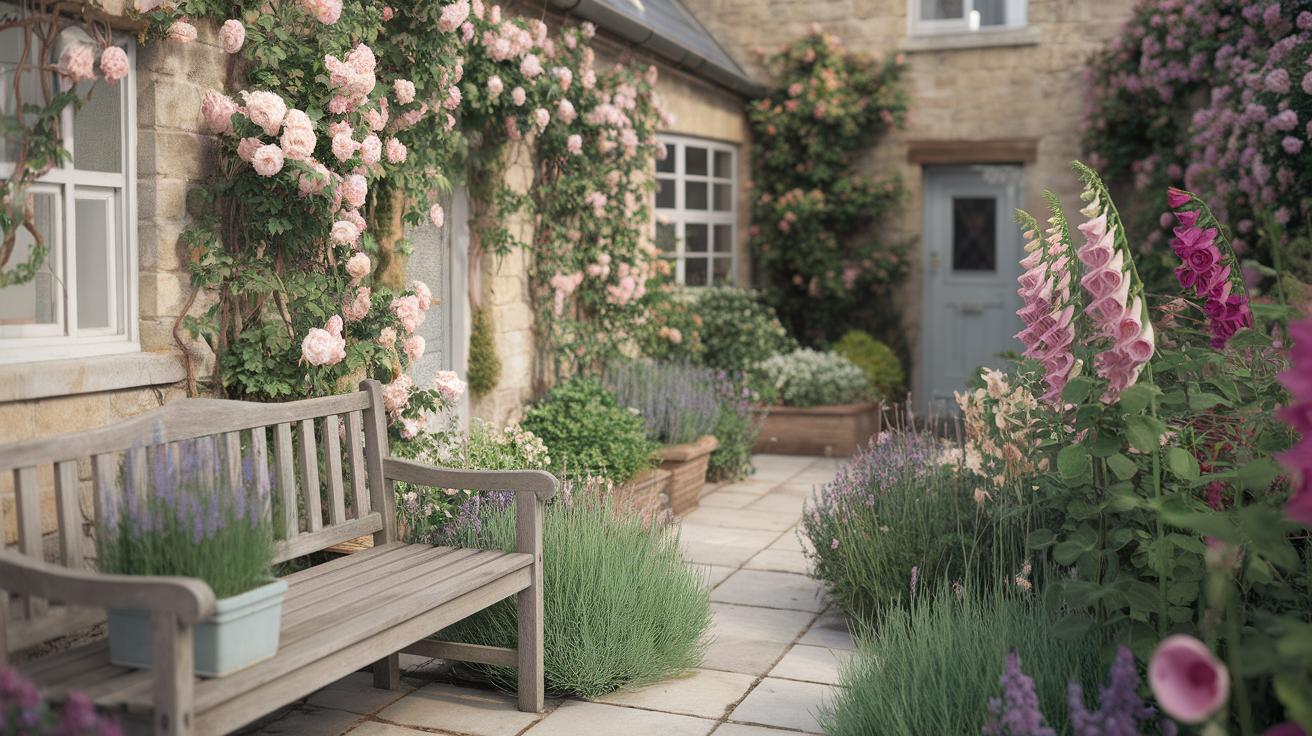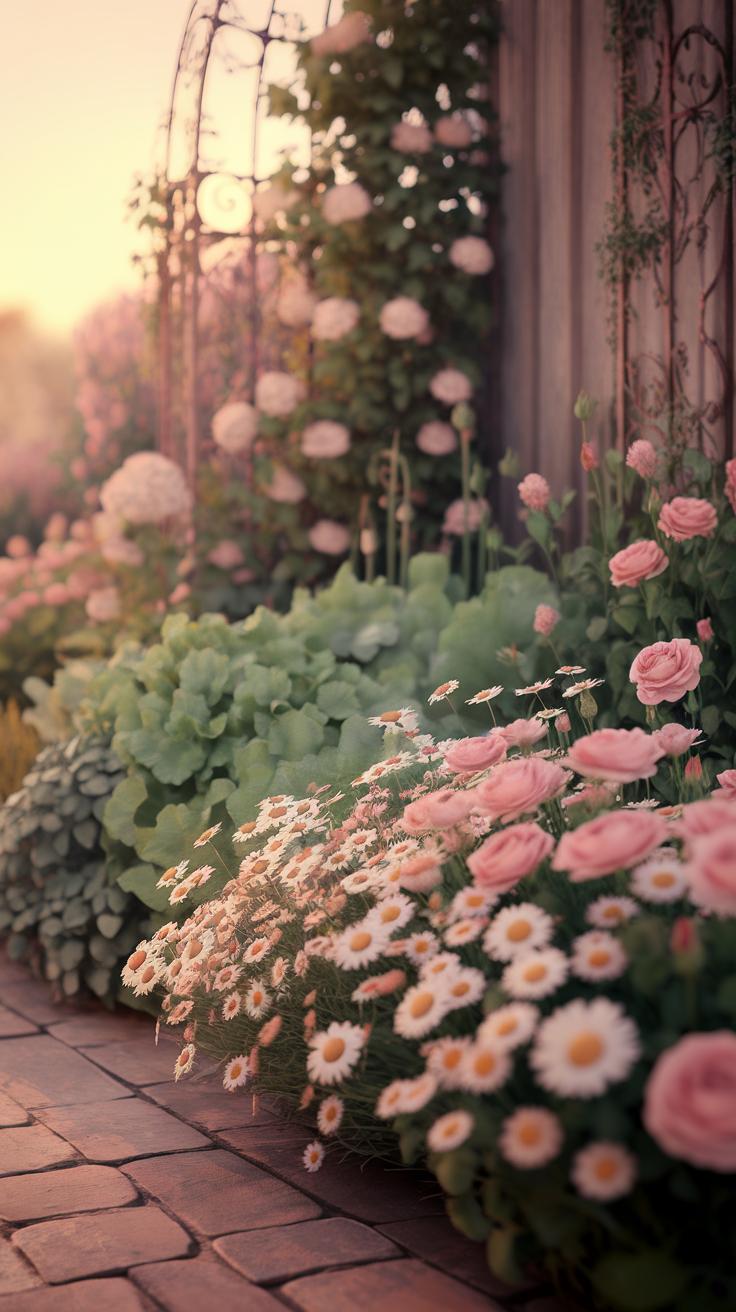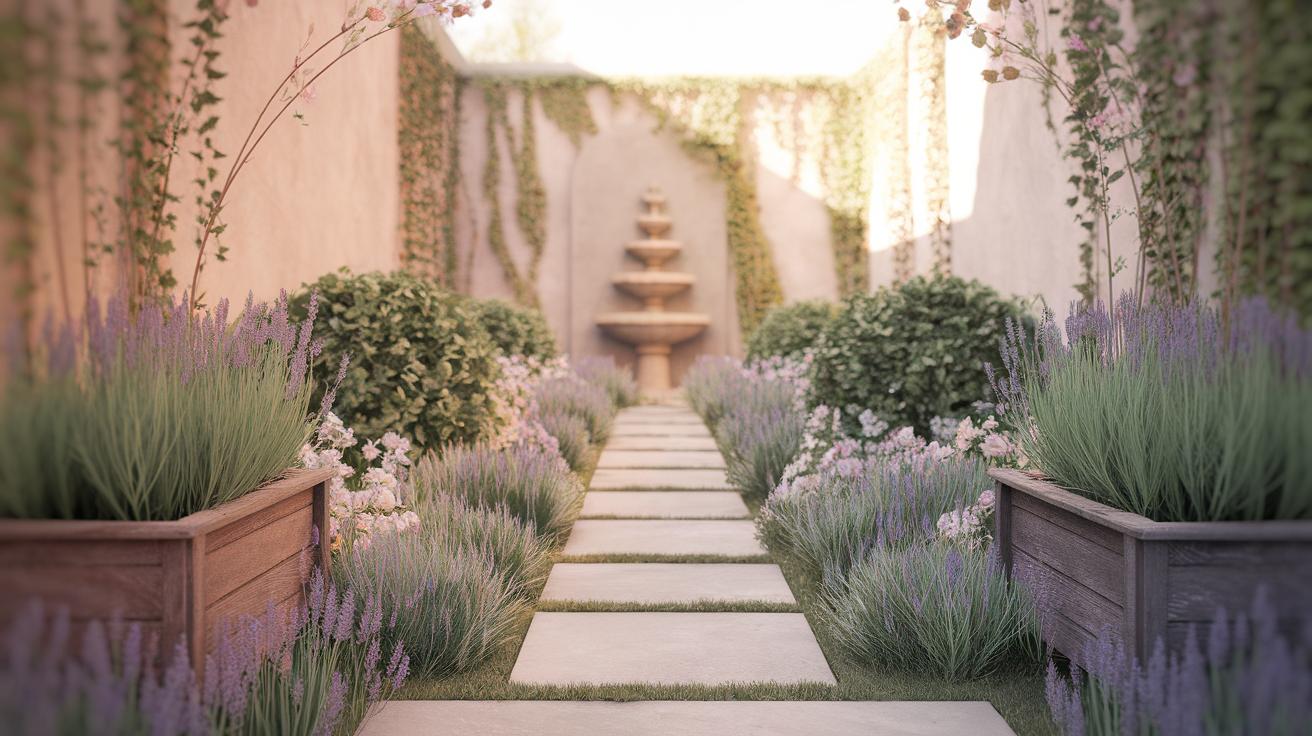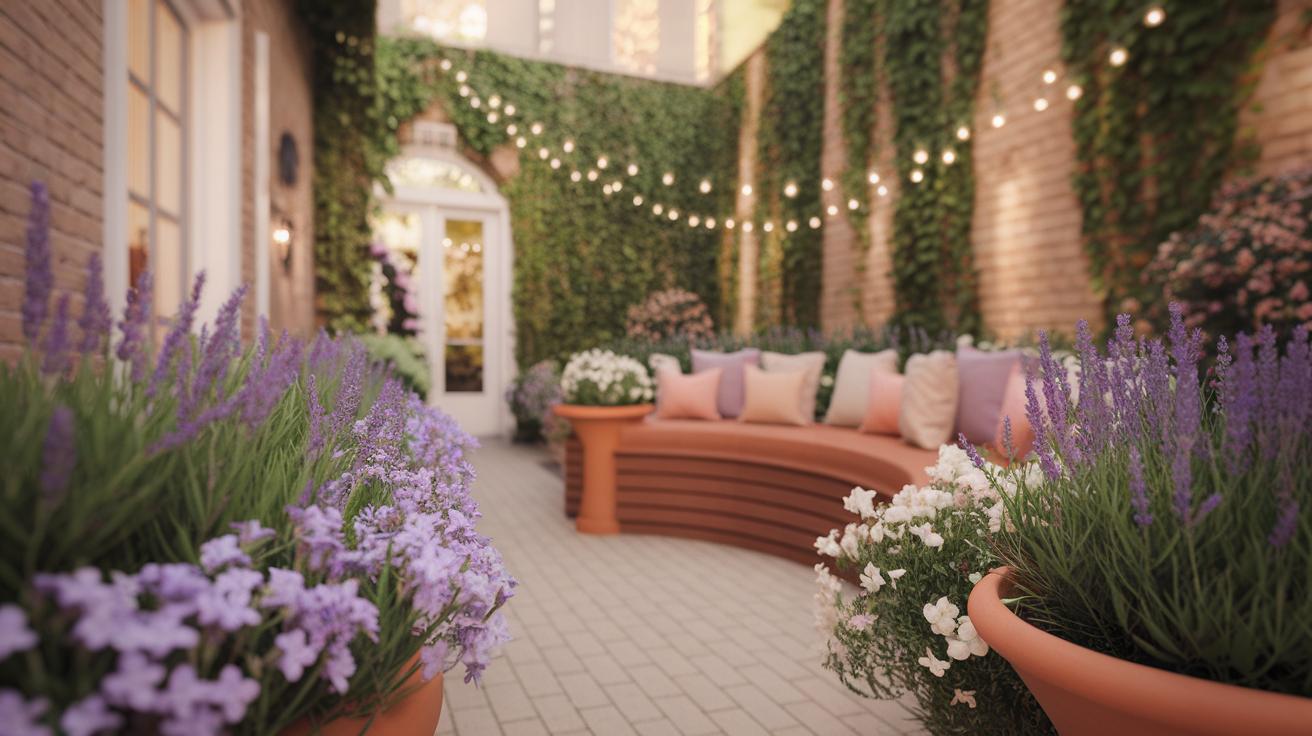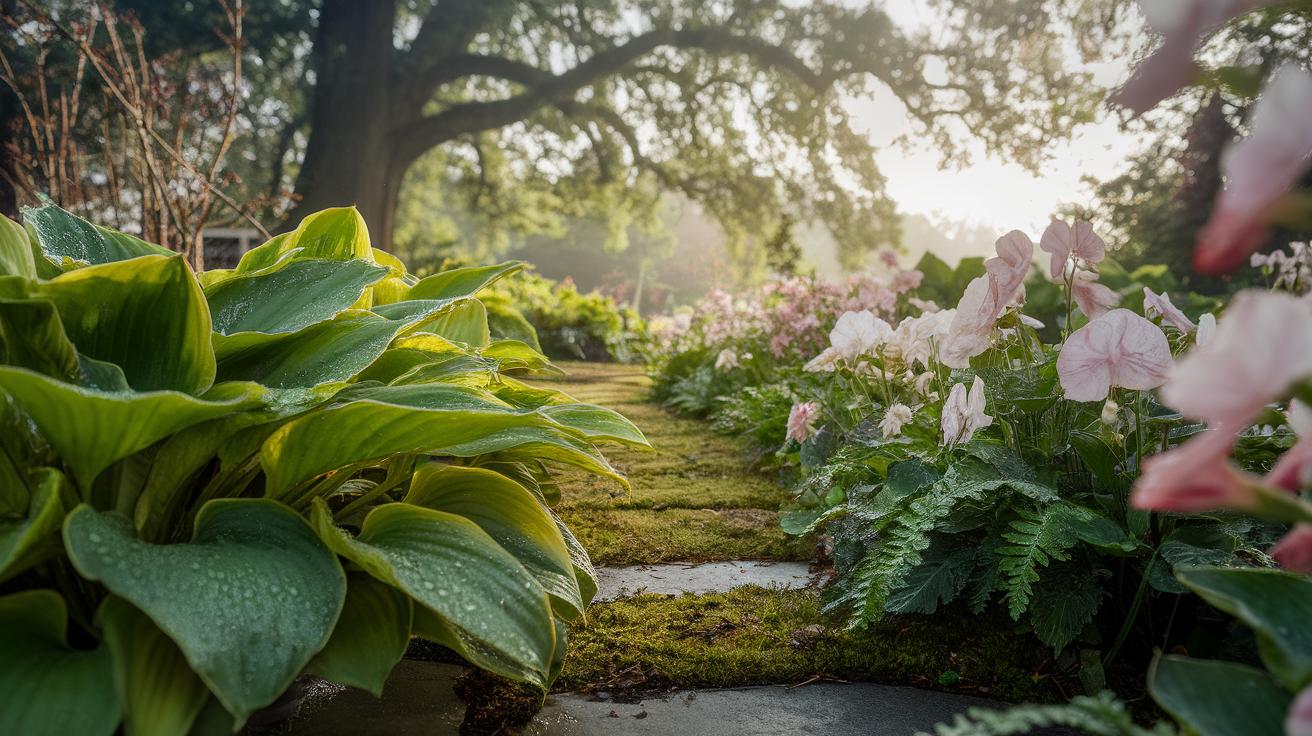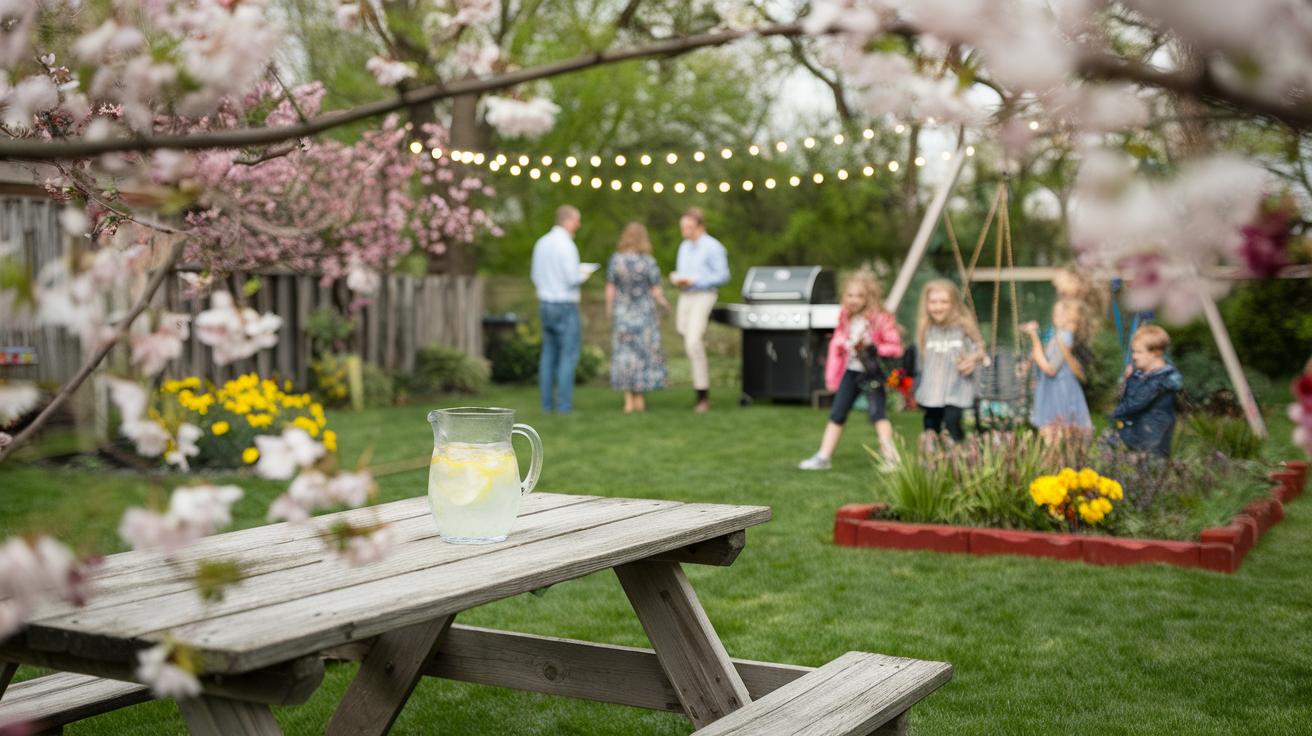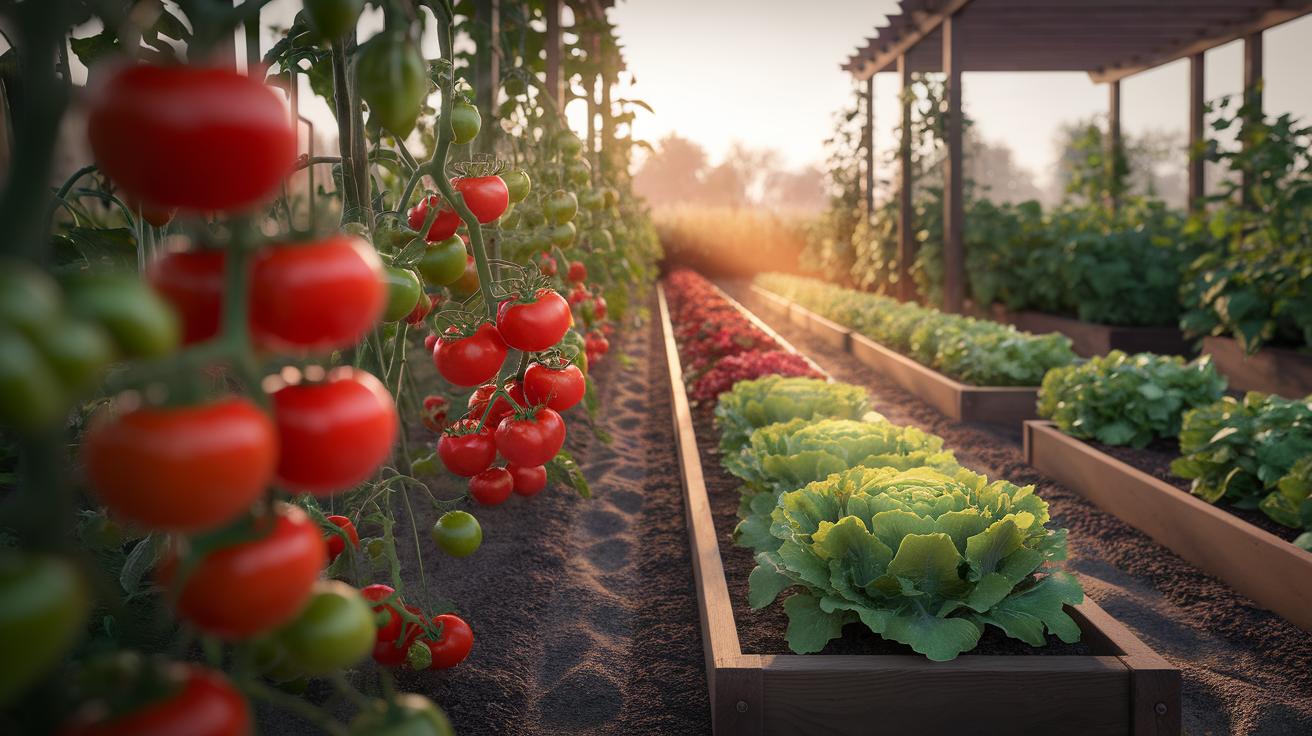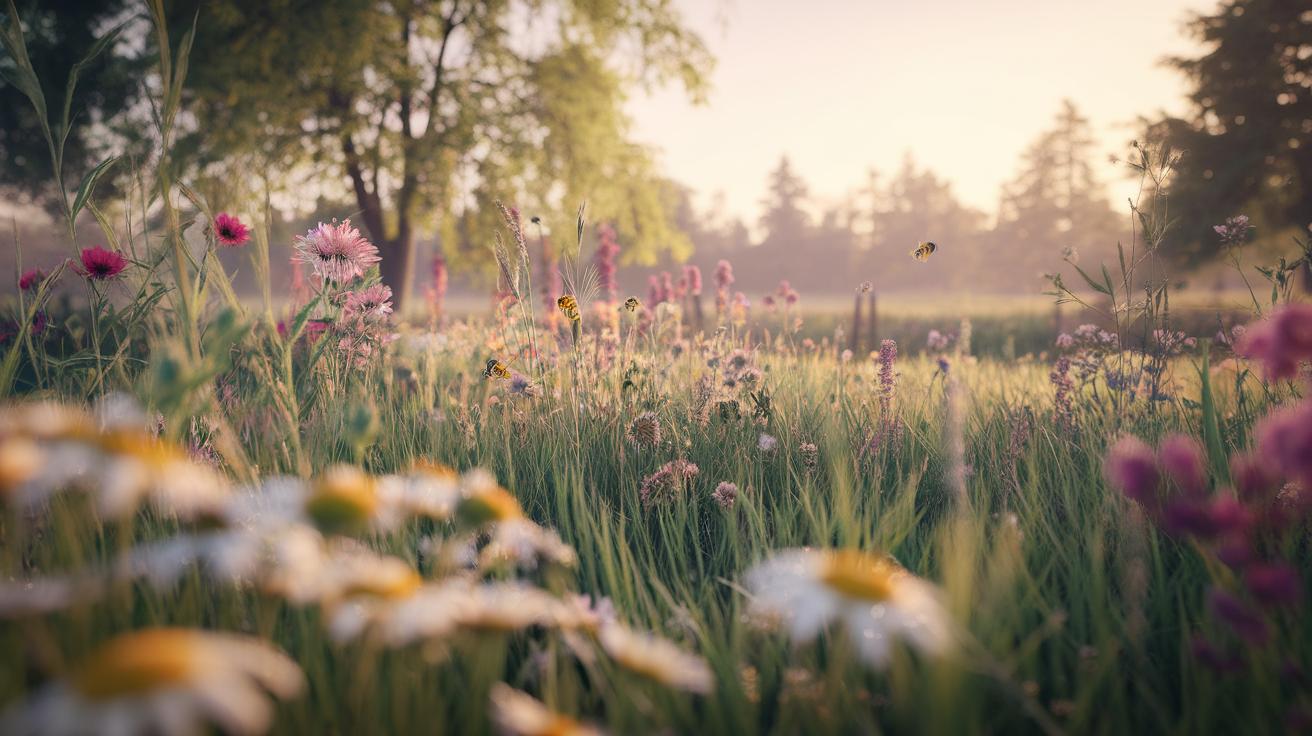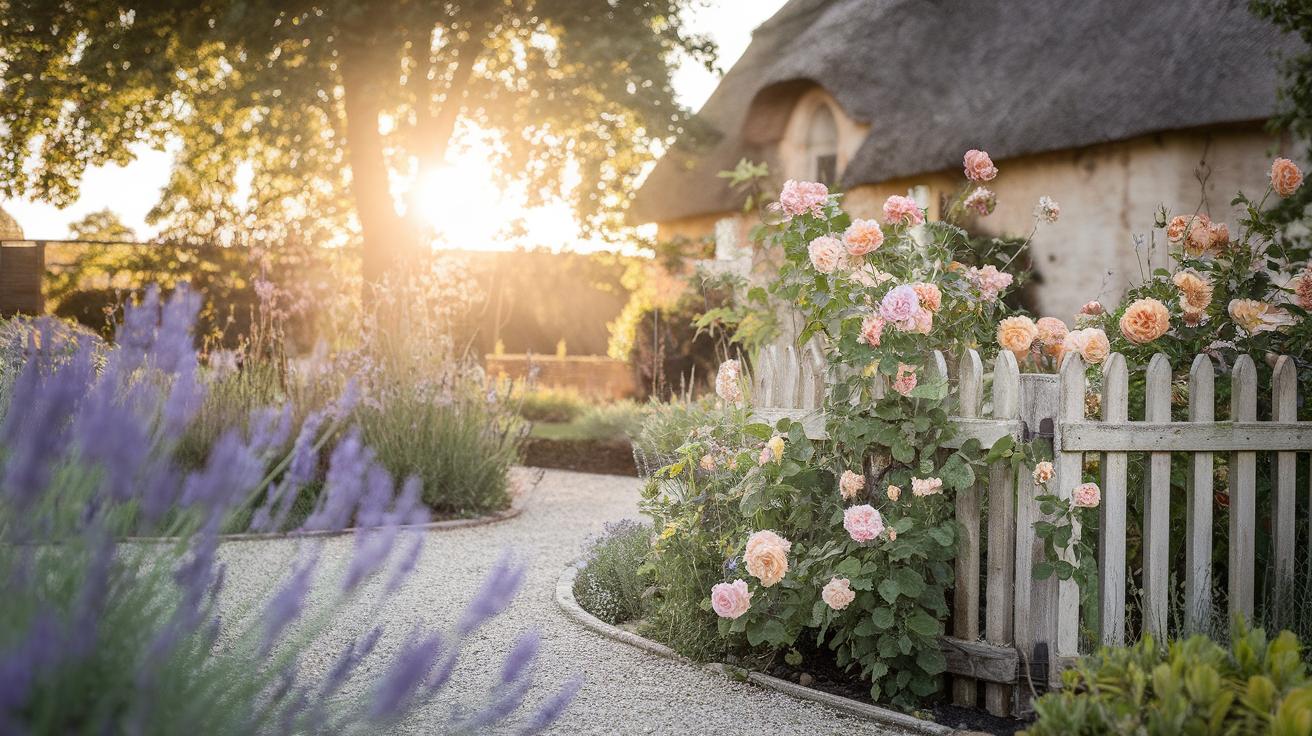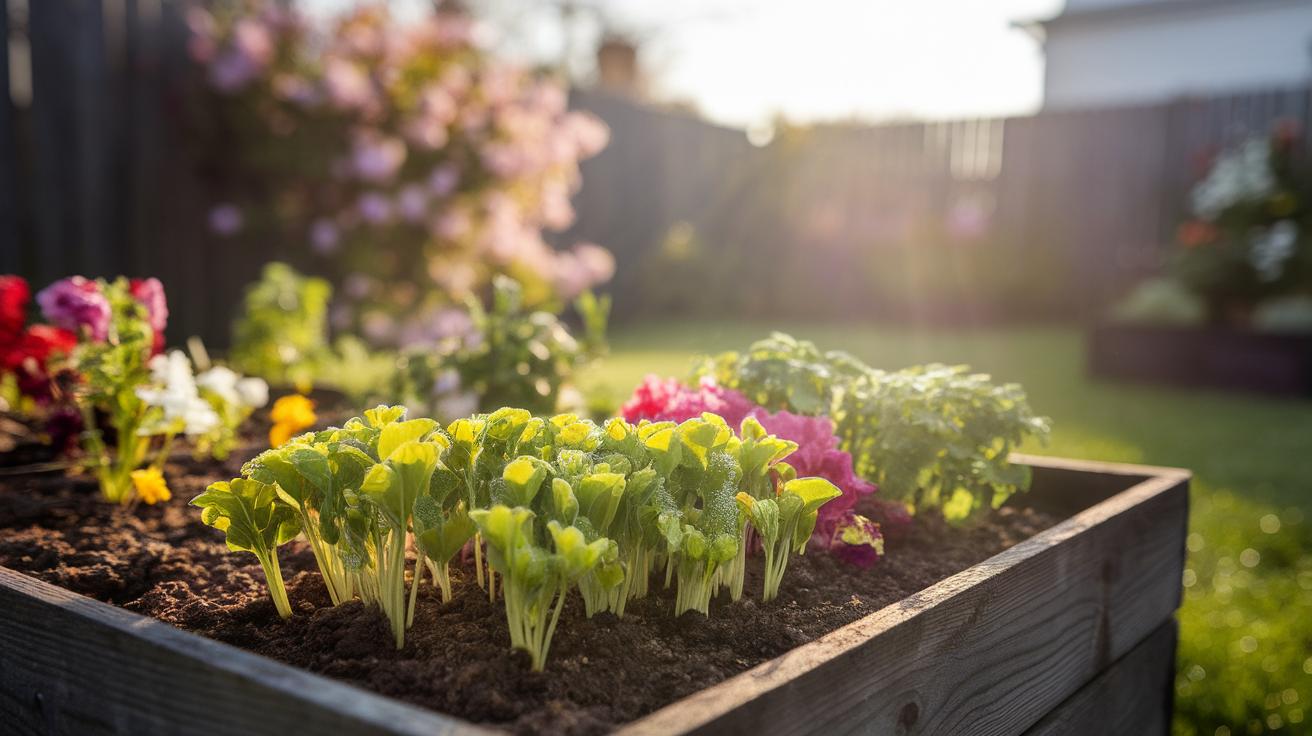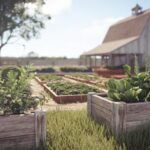Introduction
The English cottage garden is a cherished garden style known for its informal design, mixed plantings, and a blend of ornamental and edible plants. This style emerged in England in the 1870s as a counter to formal estate gardens, emphasizing charm and function over grandeur. Originally, cottage gardens focused on vegetables, fruits, and herbs, expanding over time to include more flowers for decoration. Even though rooted in tradition, the style embraces flexibility and natural simplicity. Today, cottage gardens can be adapted to various spaces, offering a welcoming and practical green retreat.
Creating an English cottage garden in small spaces is a practical way to bring natural beauty and personal delight to your home. With thoughtful planning, you can fit dense plantings and a mixture of plants into your limited garden area. This approach allows you to enjoy the essence of a cottage garden without needing expansive land. You can select plants that thrive in your environment and make use of vertical growth and container gardening to maximize your space. This article will guide you through the essentials, ideas, and steps needed to develop your own charming small cottage garden.
Understanding the English Cottage Garden Style
The English cottage garden centers on an informal layout. You won’t find strict lines or neat borders here. Instead, plants grow close together, creating a full, lush look. Dense groupings of flowers, herbs, and vegetables blend naturally. This mix serves both beauty and purpose.
Traditional materials play a role too. Natural stone paths, wooden fences, and old-fashioned garden tools add to the charm. These elements support the garden’s rustic feel. You can grow roses, foxgloves, and hollyhocks alongside kitchen staples like thyme, lettuces, and beans. The result is a garden that looks inviting and works hard.
This garden style began in England, where everyday cottages surrounded by working gardens needed to be both useful and pleasing. Its focus stayed on charm over strict form. Over time, it evolved from practical plots to more decorative spaces without losing function. How can you bring this balance into your own garden, especially if space is tight?
Origins and History
The English cottage garden started taking shape during Elizabethan times. Back then, villagers grew plants for food, medicine, and decoration. Gardens had to meet daily needs before looking pretty. This practical approach shaped the garden’s informal style.
As estates grew grand in the 18th and early 19th centuries, formal gardens ruled with strict patterns and symmetry. Cottage gardens kept their casual charm. In the late 1800s, designers revived the style by embracing its relaxed, informal look. The 1870s saw a clear turn toward blending flowers and vegetables in picturesque ways, pushing back against formal trends.
The style you see today owes much to this revival. It remains less about order and more about welcoming color and mix. When you plan your garden, how could its practical roots guide your choices?
Modern Adaptations
Today, English cottage gardens show wide variety. Regional climate and gardener tastes shape plant choices. For example, warmer areas may add lavender or ornamental grasses that handle dry soil well. Cooler regions might feature hydrangeas or foxgloves more often.
Gardeners now use new plants like disease-resistant roses to keep gardens healthy with less work. Despite new additions, traditional elements remain key. You’ll still find mixed beds of flowers and edibles, informal layouts, and natural materials.
This balance keeps the garden practical and beautiful. Your version doesn’t need to copy the past. Consider what grows well where you live and fits your style. What plants would you mix to keep tradition alive while making your garden your own?
Planning Your Small English Cottage Garden
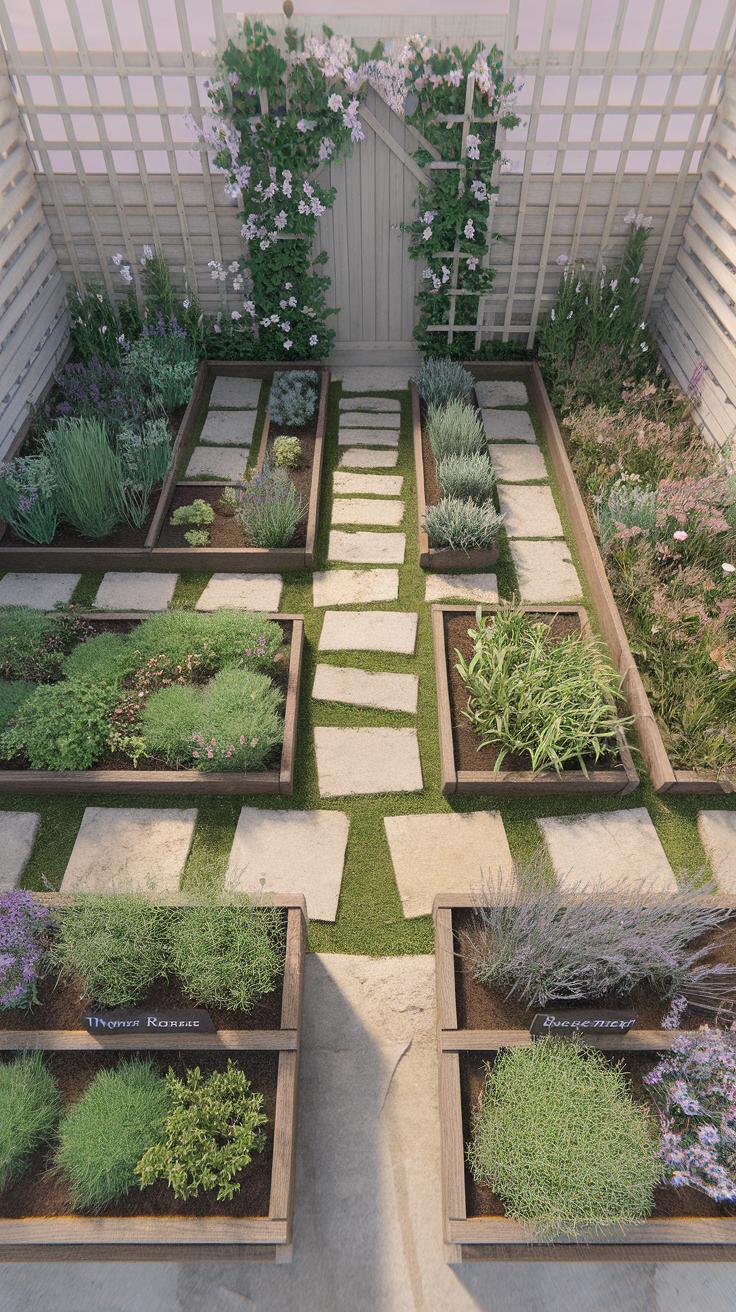
Assessing Your Space
Begin by measuring your garden area carefully. Knowing the exact dimensions helps you plan what fits comfortably without overcrowding.
Observe how sunlight moves across your space during the day. Identify spots that receive full sun, partial shade, or heavy shade. This guides which plants will thrive.
Test your soil to learn its type and quality. Is it sandy, clay, or loamy? Check the drainage by digging a small hole and seeing if water pools or drains quickly.
Think about how the light and soil conditions will change with the seasons. Are there nearby trees or buildings that block sun or wind?
Consider your garden’s microclimates. For example, a wall may reflect heat, creating a warmer zone ideal for certain plants.
Answering these questions helps create a planting plan that suits your small space well and reduces wasted effort.
Choosing a Layout
Pick a layout that fits your space and lifestyle. Raised beds work well if your soil is poor or you want clear planting zones.
Vertical gardening saves ground space while adding interest. Try trellises, wall-mounted planters, or hanging pots to grow climbers and trailing plants.
Container gardens are versatile for small areas. You can move pots to catch sun or shelter plants from wind.
Winding paths introduce movement and invite you to explore the garden fully, even when space is tight. Use gravel, brick, or stepping stones to define these routes.
Combine edible plants like herbs or strawberries with flowers for a garden that looks good and provides fresh ingredients.
Consider how each element connects visually and functionally to make every inch count for beauty and utility.
Selecting Plants for Small Cottage Gardens
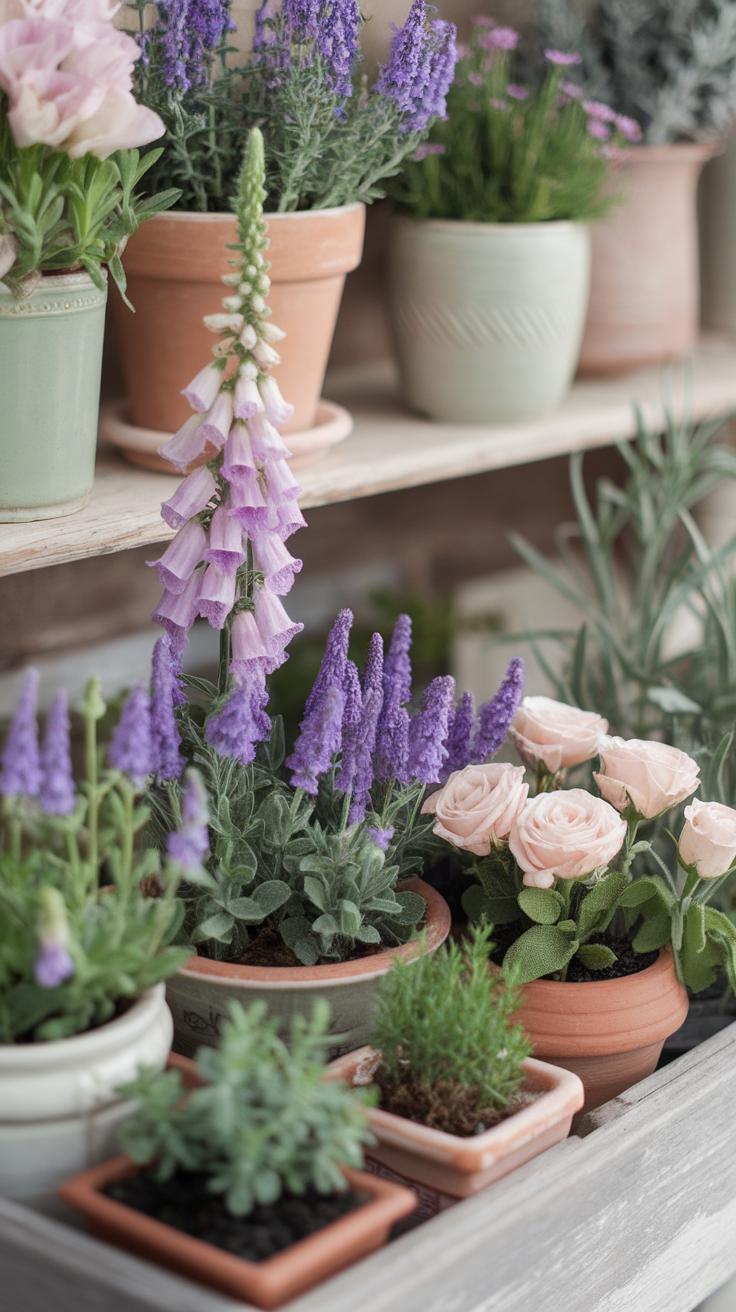
Your choice of plants shapes the feel and function of a small cottage garden. Aim for plants that use space wisely without losing the garden’s traditional charm. Picking compact and multi-purpose plants helps you grow more, even in tight spots.
Think about plants that stay small but spread nicely, like dwarf roses or miniature foxgloves. These fit where room is limited but still add color and texture. Choose self-sowing annuals such as forget-me-nots or calendula that return year after year, reducing the need for replanting.
Herbs like thyme and chives double as both edible treats and pretty ground cover. Many perennials, including lavender and catmint, offer long-lasting blooms and fragrance while staying within a compact space.
Compact and Multi-Purpose Plants
Look for plants that save space by serving more than one purpose. Dwarf varieties of traditional cottage plants are perfect. Think small roses or compact delphiniums that don’t spread aggressively.
Self-sowing annuals help fill gaps and come back each year without much effort. Sweet peas and nigella are examples that reseed freely and brighten the garden. Combine them with herbs that add flavor to your cooking while filling in plant beds.
Growing plants that attract pollinators also supports your garden’s health. For example, lavender and borage offer flowers and a habitat for bees. This approach keeps your garden busy and productive in every corner.
Climbers and Vertical Space
Vertical gardening lets you add height without using ground space. Climbing plants like climbing roses and honeysuckle rise up walls, fences, or trellises. They bring scent and color where space is tight.
Choose self-supporting climbers first to avoid heavy pruning. If your garden gets enough sun, clematis varieties offer vibrant flowers that intertwine beautifully with roses. Passionflower or sweet peas can fill gaps quickly during warmer months.
Trellises or obelisks turn vertical space into a garden feature while supporting these plants. Ask yourself: where can you grow upwards in your garden? Even a small corner can support a vertical display that feels full and alive.
Creating Structure in Your Cottage Garden
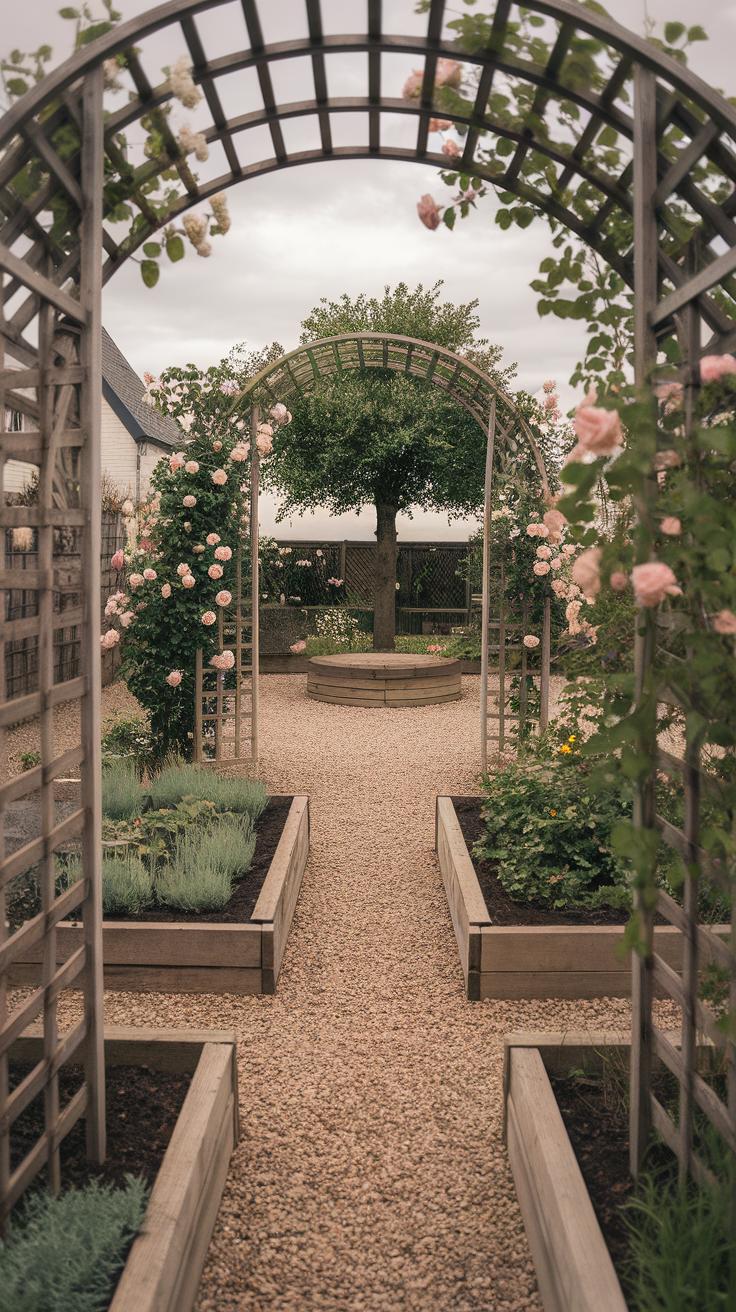
Small cottage gardens benefit from clear boundaries that organize and define each section. Edging helps separate flower beds from paths, making the garden look tidy and easier to care for. You might use natural stone, bricks, or wooden logs for edging, which fits well with cottage garden style. These materials also prevent plants from spreading too widely, which keeps your garden manageable even in tight spaces. Think about how each section needs enough room for plants to reach their full size without crowding.
Paths let you access plants without stepping on soil and compacting it. Narrow paths maximize planting space while keeping your garden easy to navigate. Using materials like gravel, wood chips, or brick creates a soft, natural look. Curved paths create gentle lines, helping small gardens feel larger and more inviting. Ask yourself where you want the garden to lead. Will the path highlight your favorite plants or make a quiet space for sitting? Paths and edging work together to bring order and flow to your cottage garden.
Paths and Edging
Paths in small cottage gardens should be as narrow as possible while still allowing easy movement. A simple footpath can measure about 12 to 18 inches wide. This width saves space for planting while giving you access to care for your plants. Materials like reclaimed bricks, flagstones, or gravel add an organic feel that suits a cottage garden. Natural edging materials such as lavender stems, low box hedges, or rustic wooden logs clearly mark borders without feeling out of place.
Edges help you avoid overgrowth that reduces garden neatness. You can maintain clean lines that make the garden look thoughtful. Narrow paths also prevent soil from being trampled, which supports plant health by avoiding soil compaction. Where your edges curve, keep the lines soft and not too sharp to match cottage garden’s informal style. Consider planting low-growing ground covers along edges to blend paths naturally with planting beds.
Support Structures
Using vertical support structures like trellises and obelisks lets you grow climbing plants without using extra ground space. These help maximize the vertical dimension in your garden. Choose supports made from natural wood or rusted metal to keep the organic cottage garden feel. Place them near walls or at the edge of beds so vines can climb without blocking other plants.
Climbing roses, clematis, and sweet peas thrive with this added height. Support structures contribute to garden design by adding layers and points of interest at eye level and above. They also improve air circulation around plants, reducing disease risks. If space is very limited, obelisks let you create vertical focal points that break the garden’s horizontal layout. How can you add height without losing precious planting spots? Supports answer that by lifting your garden upward.
Integrating Edible and Ornamental Plants
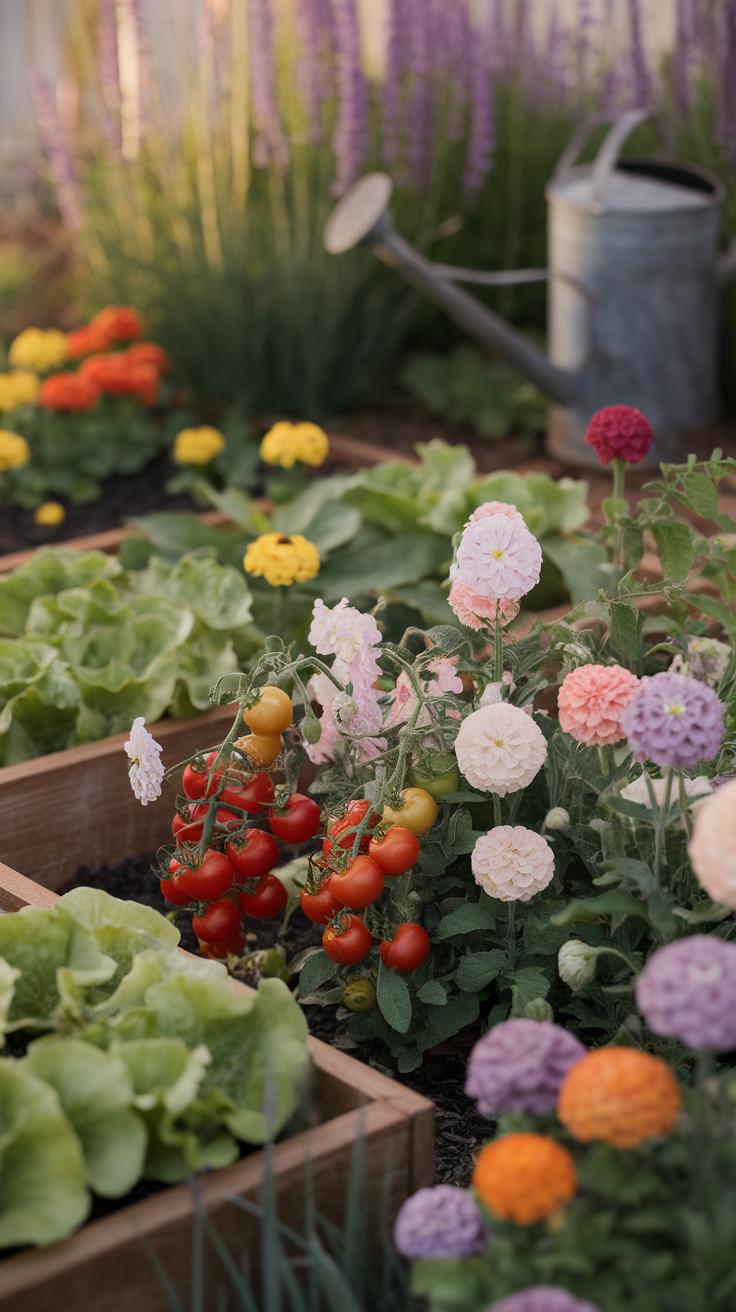
Combining edible plants like vegetables and herbs with flowers creates a garden that looks good and feels useful. When planning your space, think about how plants grow. Some vegetables, such as lettuce or radishes, stay low, while herbs like rosemary or thyme can grow bushy. Pick flowers that fit those spaces without crowding the edibles. Consider colors that complement each other. Purple basil pairs well with pink cosmos, for example, creating visual charm and balance.
Harvest needs also matter. Place plants that you pick often in easy-to-reach spots. Avoid blocking paths with tall blooms that camouflage smaller veggies. Mixing flowering plants with edibles can help attract pollinators that improve harvests. Have you noticed how bees prefer gardens with varied blooms? This idea works well even in small areas, letting your garden serve both function and beauty.
Plant Pairings for Beauty and Function
Pair flowering herbs like lavender, chives, or rosemary with vegetables to boost your garden’s appearance and productivity. Lavender’s silver-green leaves and purple flowers add a gentle color near tomatoes or beans. The scent can deter pests, helping your veggies thrive.
Chives bloom with small purple flowers that look great next to pepper plants and enhance soil health. Rosemary’s woody stems support climbing peas. Think about how colors mix and how plants support each other physically and ecologically. What colors draw you in most, and which herbs do you enjoy using in cooking?
Harvest-Friendly Design
Arrange vegetables and herbs so you can easily reach them without stepping on the soil. Put taller plants like tomatoes or pole beans at the back or center. Place low growers like lettuce and ground-cover herbs near paths or edges.
Use paths or small stepping stones to reach every plant without compacting the soil. Group plants that mature at different times to enjoy a steady harvest. For example, grow quick radishes beside slower-growing carrots. Does your garden layout encourage you to pick fresh herbs every day? Designing with ease of harvest in mind keeps your garden both productive and inviting.
Maximizing Space with Vertical and Container Gardening
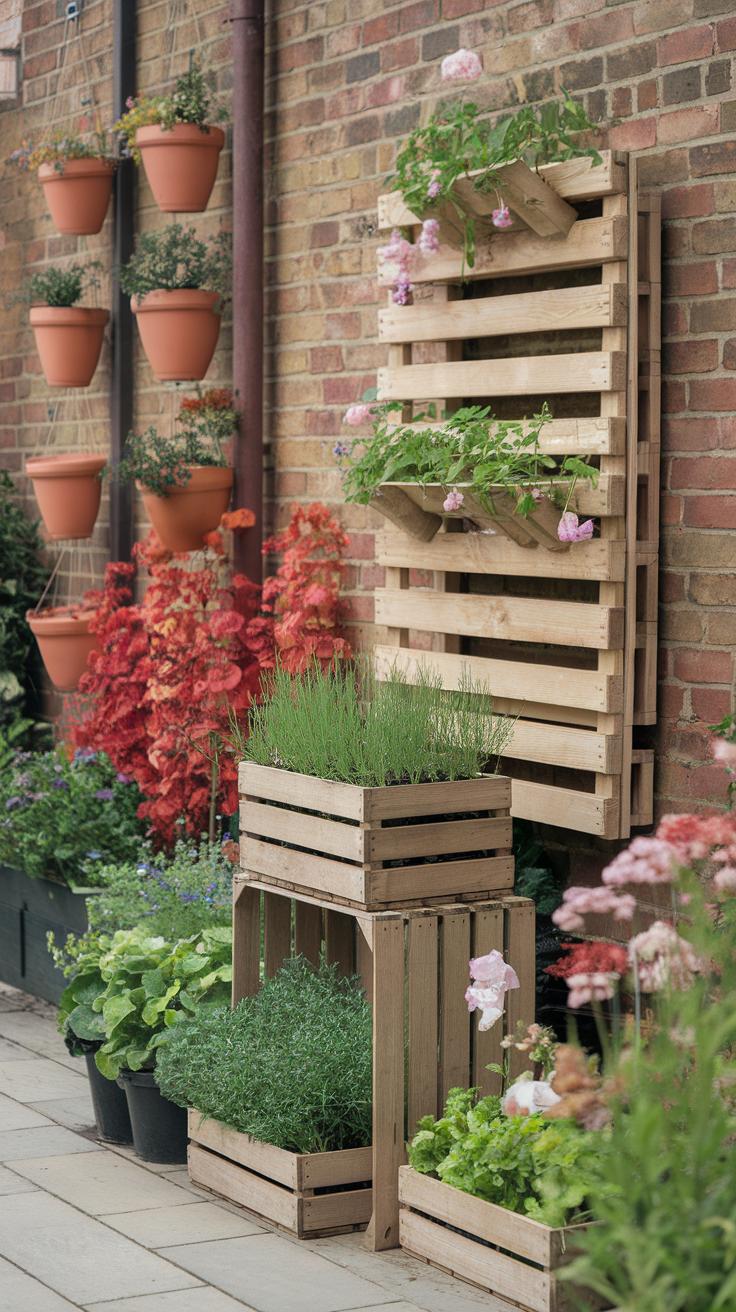
Small English cottage gardens benefit greatly from using vertical and container gardening techniques. Growing plants upward frees ground space, allowing for a wider range of flowers and herbs in a limited area. Adding height with trellises or hanging baskets creates layers that make your garden feel larger and fuller. Containers bring the flexibility to move plants around, helping you adjust your garden’s layout with ease as plants grow or seasons change.
Using vertical structures lets you grow climbing roses, sweet peas, or even blackberry vines close to walls or fences. Meanwhile, containers allow you to experiment with different plant varieties and mix edible with ornamental species, maintaining both charm and purpose in your space. How can you stretch your garden’s square footage while keeping it cozy? Vertical and container gardening offer practical answers.
Vertical Gardening Techniques
You can install trellises on fences or walls to support climbing plants like clematis or morning glories. Their flowers brighten vertical spaces and draw the eye upward. Hanging baskets bring plants like fuchsias or trailing ivy into a new dimension above your garden beds. Wall-mounted planters offer space-saving spots for herbs or small flowering plants without taking any floor space.
Use these methods to fill empty walls or obscure corners. Arrange plants so that taller climbers receive full sun, while shade-tolerant trailing varieties hang nearby. This setup maximizes plant health while enhancing garden texture. Would you like to turn a blank wall into a living, blooming feature? Vertical gardening makes it possible even on tight plots.
Choosing Containers Wisely
Pick containers that fit your plants’ needs and your garden’s style. Clay pots work well for plants that prefer dry soil, while plastic holds moisture longer for moisture-loving species. Small pots suit herbs or annual flowers, while larger containers accommodate shrubs or small fruiting plants like strawberries or dwarf tomatoes.
Consider the weight if you plan to hang containers. Choose deeper pots for plants needing room for roots to spread. Think about shapes that complement your garden’s layout—round pots soften edges, while rectangular containers fit well along paths or window sills. You can mix and match container types to create interest and variety throughout your garden.
How might your garden change if you swap a heavy ceramic pot for a light hanging basket? Choosing containers thoughtfully helps you balance plant health and aesthetic impact in small spaces.
Maintaining Your Small English Cottage Garden
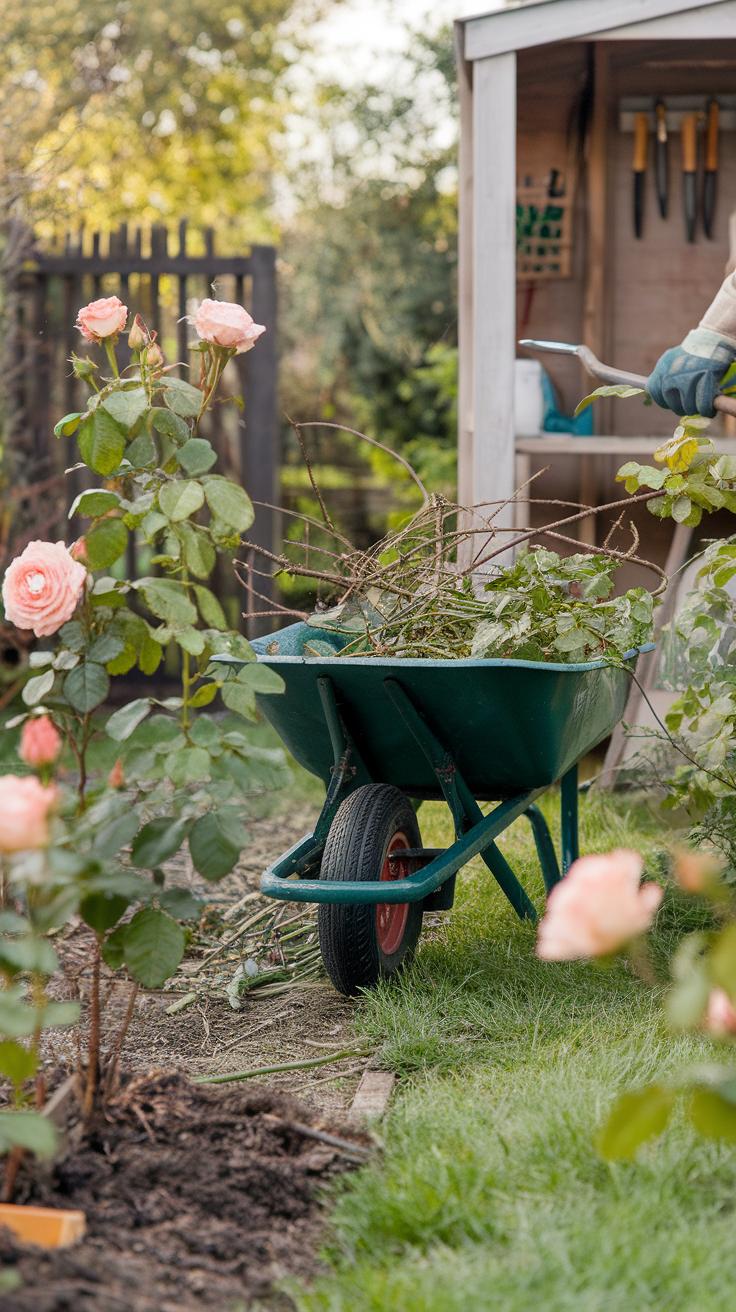
Keeping your small English cottage garden healthy requires simple but regular care. Watering needs to match your garden’s size without overdoing it. Use watering cans or drip systems to deliver water directly to roots, avoiding waste and damp foliage. This reduces disease risks in tight spaces where airflow might be limited.
Soil stays fertile by mixing in compost or organic matter every season. These enrich nutrients, help soil retain moisture, and improve drainage. Using mulch around plants can keep soil cool and conserve water, making your routine easier. Checking soil texture regularly helps you spot when drainage or nutrition might need attention.
Watering and Soil Care
Small English cottage gardens often face uneven watering challenges due to limited ground space. To manage this, water early in the day to let moisture absorb fully before cooler nighttime sets in. Choose containers or planting spots with good drainage to avoid soggy roots.
Nutrient buildup can be limited in containers and confined beds. Add slow-release organic fertilizers quarterly to maintain steady plant growth. You might also consider rotating crops or periodic soil replacement to avoid nutrient loss over time. Testing soil pH, especially near acid-loving plants like hydrangeas, helps tailor care accurately.
Pruning and Deadheading
Regular pruning keeps plants neat and prevents them from overtaking small spaces. Trim back perennials and shrubs after flowering to shape them and encourage fresh blooms. Deadheading—removing spent flowers—extends flowering periods and stops plants from self-seeding into crowded spots.
Focus on cutting back growth that crowds paths or smothers neighboring plants. This control helps maintain airflow, reducing fungus risks. Use clean, sharp tools to make precise cuts without damaging stems. Take note how some plants, like foxgloves, respond well to cutting just above a set of leaves, encouraging more flowers.
Adding Traditional Features and Decorations
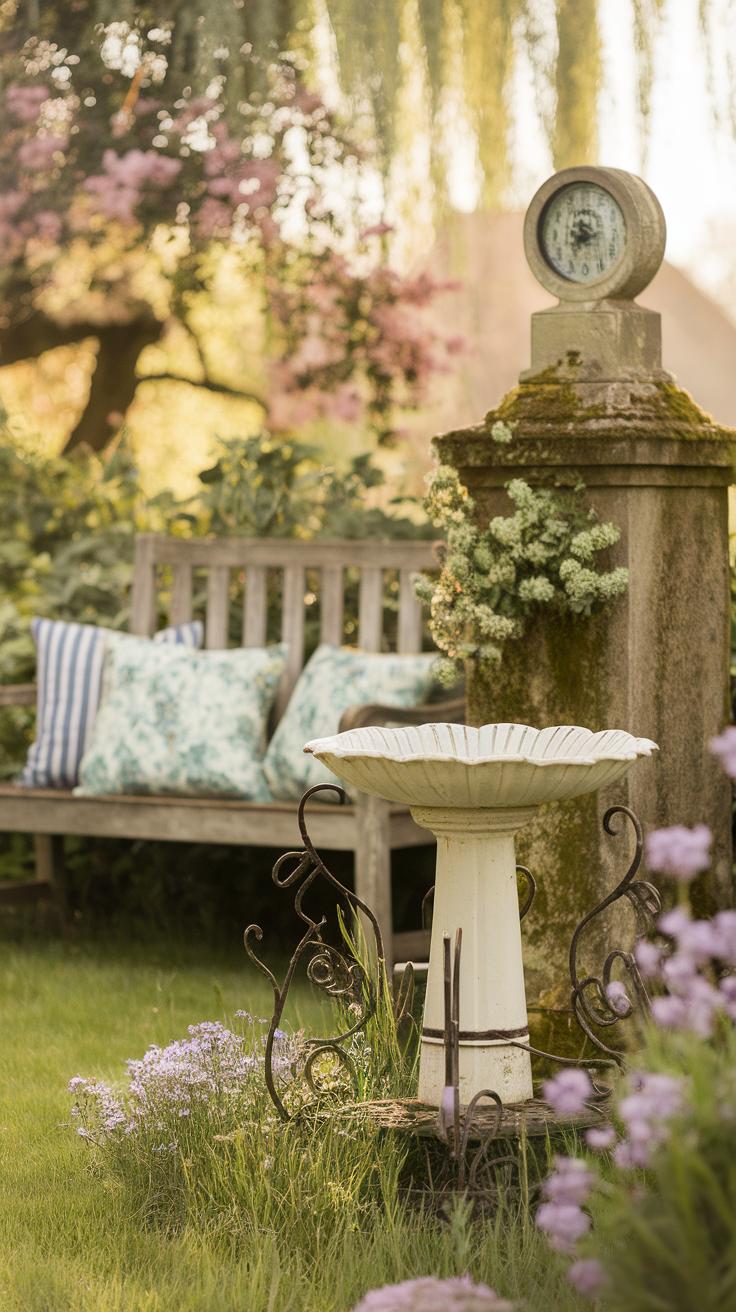
Birdbaths, rustic fencing, and rose-bowered gateways give your garden character and a sense of tradition. These features bring focal points that invite you to pause and enjoy the space. A small birdbath can fit in a corner or near a bench where birds and butterflies visit. Choose simple, weathered styles to keep a natural look that fits the English cottage theme.
Rustic fencing defines garden edges without blocking views. Use low, wooden fences or even woven hazel hurdles. Their light structure avoids overwhelming tight spaces. Place a rose-bowered gateway at a path entrance to create charm and guide visitors into your garden. Climbing sweet peas or clematis over the gateway adds fragrance and color without taking up ground space.
Think about how each element serves a purpose beyond decoration. Can your birdbath also attract pollinators? Will your fence support climbing plants? These touches add authenticity while maximizing small areas.
Traditional Ornamentation
Select ornaments that feel simple and natural. Avoid large statues or heavy pieces that crowd your garden. Small, aged pots with herbs, weathered ceramic jugs, or wrought iron lanterns work well. Place decorations near paths or seating zones to create interest without clutter.
Use colors and materials found in nature to keep balance. A small bell, a vintage watering can, or an old wooden stool creates warmth. Could a hand-painted sign with a favorite garden quote make your space feel more personal? Think about what tells your garden’s story without taking away from the plants.
Functional Decorations
Trellises, containers, and obelisks pull double duty in small gardens. A vertical trellis at the back of a flower bed supports climbing roses and also acts as a decorative screen. Containers with herbs or flowers bring flexibility—move them to fill empty spots or create mini focal points.
Obelisks or plant supports add height and shape without using much ground space. Use them to frame entrances or seating areas. Can you find vintage crates or baskets that serve as planters and provide a rustic look? Functional items that add structure keep your garden neat while enhancing style.
Encouraging Biodiversity and Wildlife
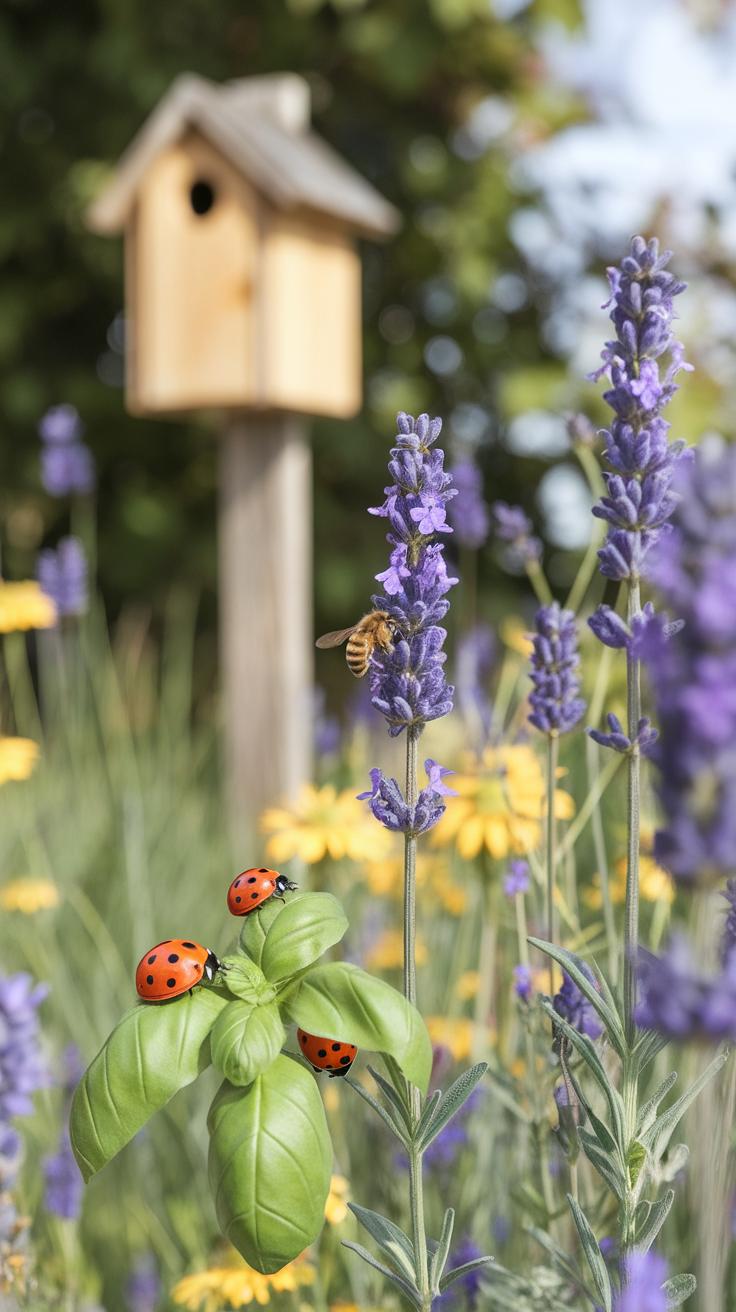
Your small English cottage garden can become a lively space full of birds, bees, and beneficial insects. These visitors help keep your garden healthy by pollinating flowers and controlling pests naturally. When you encourage wildlife, you support a balanced ecosystem right at your doorstep.
Think about what attracts these creatures. They need food, water, and shelter. Flowers that produce nectar and seeds will bring in pollinators and seed-eaters. Water sources, like shallow dishes or small birdbaths, offer vital hydration. Places to hide and rest, such as dense plants or small piles of leaves, invite wildlife to stay longer. How can you make these spots fit within your small garden?
Allowing wildlife in your garden also gives you more chances to watch nature closely. Birds singing or butterflies landing on blooms add a fresh sense of wonder. When you design with biodiversity in mind, your garden becomes a thriving patch of life even in limited space.
Plant Choices to Attract Wildlife
Choose plants that provide nectar, pollen, and seeds to invite helpful insects and birds. For pollinators, lavender, foxgloves, and hollyhocks are excellent options. Buddleia, often called the butterfly bush, draws a variety of butterflies and bees.
Herbs like thyme, sage, and mint also feed beneficial insects. These companions help keep pests in check naturally. Native wildflowers, such as daisies and clover, support local pollinators better than some exotic plants.
Consider planting small shrubs or berry-producing plants like hawthorn or cotoneaster. Birds love them for winter food. How do your plant choices support the wildlife you want to see?
Creating Habitats
Give wildlife safe places to live and rest. Small birdhouses fit well in compact gardens and attract songbirds. Place them in quiet spots away from predators. Insect hotels with layers of wood, straw, and hollow stems create shelter for bees and ladybugs.
Piles of stones or logs offer hiding places for ground beetles and frogs. Even a small corner left wild with fallen leaves or clippings provides habitat for many beneficial creatures. You don’t need much room to help wildlife thrive.
Would adding a birdhouse or insect hotel change how you connect with your garden? Simple touches like these grow your garden’s life and bring more activity to enjoy.
Conclusions
Creating an English cottage garden in small spaces is achievable by focusing on dense planting, plant selection, and effective use of space. Consider combining edible and ornamental plants to maintain both function and visual appeal. Using traditional elements like climbing roses and herbs supports the cottage garden character. Planning your garden with pathways and focal points enhances the experience and usability of your garden.
Engage actively with your garden by experimenting with plant combinations and designs that suit your environment and available space. Maintaining the garden to support its health and beauty will give you ongoing satisfaction. Reflect on how the English cottage garden style can improve your outdoor space, providing a peaceful and productive area that you can enjoy daily. What elements of this garden style will you incorporate to make your space truly yours?


